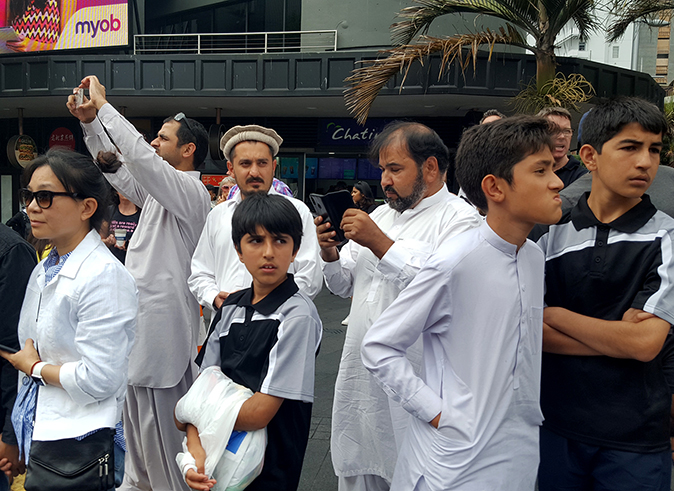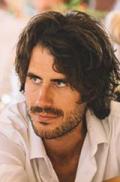
OPINION: By Michael Andrew, of Pacific Media Watch
AUCKLAND (Asia Pacific Report/Pacific Media Watch): The New Zealand mainstream media has done two things in the past fortnight – it’s shown just how good it can be with excellent reporting of the Christchurch mosque terror attacks.
And it’s shown – due to the first accomplishment – just how bad it has been in the past.
Suddenly, stories, good stories about Kiwi Muslims and migrants and refugees – people who in the past were typically portrayed negatively while white supremacists went unreported – are filling our newspapers and phone screens, educating readers and enabling help and support to be sent where it is needed most.
READ MORE: Representations of Islam and Muslims in New Zealand media
It’s good news. Proper news. But how long will it last? There are concerns the collective gaze of the media will eventually shift back to the same old Pakeha interest stories after the dust settles in Christchurch.
The media industry, after all, is not comprised of Muslims and migrants. It is comprised mostly of Pakeha.
It was never any big secret that New Zealand newsrooms – and the journalism schools that supply them – lack diversity.
But knowing still doesn’t reduce the shock when your journalism class is asked how many people identify as non-pakeha and six hands out of 30 rise slowly into the air.
The question is then, how do future journalists respond to this reality? What can we do to enhance the diversity around us and ensure that our work fairly represents Aotearoa, the real Aotearoa, all 213 ethnicities of it – and not just in a time of crisis?
Sincere commitment
“It is about a sincere and sustained commitment,” says Professor David Robie, director of AUT’s Pacific Media Centre.
“Any country’s news media should have newsrooms reflecting the cultures and diversity at large. Clearly, ours don’t and so proactive policies need to be put in place to ensure that they do.”
Dr Robie, who founded the PMC in 2007 with the purpose of fostering diversity and inclusiveness, says journalists, especially Pakeha ones, need to start thinking outside the box of mainstream media.
“Journalists need to think much more in terms of development communication styles such as “talanoa journalism” and not be too hung up on “conflict” mode journalism.”
The PMC produces its own media, such as Asia Pacific Report and Southern Cross radio, as a commitment to diversity and “hidden voices”.
A traditional Pacific philosophy, talanoa involves flexible, open communication and dialogue through the sharing of stories and building empathy. For many Pasifika people, it is essential for constructive communication and to prevent ideas being misunderstood or misrepresented.
In a 2008 research paper, Tagata Pasifika executive producer John Utanga wrote, “Pacific people must make sure their side of the story is told in the digital era or face further marginalisation in New Zealand.”
Unless that “side of the story” is told fairly, however, marginalisation, such as what the Muslim community has suffered, remains a real risk.
Misrepresentation
A 2018 research paper in Pacific Journalism Review entitled Representations of Islam and Muslims in New Zealand Media found that in 2017, the New Zealand media featured 14,349 articles with the word Islam. Of those 14,349 stories, 5199 also mentioned the word Islamic Jihad and 7774 mentioned Islamic terrorism.
The author, AUT senior lecturer in public relations Khairiah A Rahman, says this was due to journalists working to an agenda and not adequately conveying the voice of the Muslim subject.
“It’s got to do with understanding the voice, listening, using dialogue when you’re interviewing or recording,” she says.
“We found this to be severely lacking in the stories.”
While Rahman found a small number of articles that adequately captured the subject’s voice, she says these were usually written by a designated “ethnic” correspondent.
In order for other journalists to do the same, she says it is important to be honest, transparent and to understand the particular brand of dialogue of the interviewee.
Experts in the field
This of course means that journalists need to become “experts” in the field on which they’re writing, something Dr James Hollings, the author of several research papers on the state of New Zealand journalism, says is key to increasing reporting diversity.
“Pick something you’re interested in and become an expert in it.”
Journalism programme leader at Massey University, Dr Hollings says that while training and recruiting journalists from minority communities is not easy, it is an essential part of increasing diversity in newsrooms.
“It means actively trying to encourage more Māori and Pasifika journalists, more Indian and Asian journalists, or maybe more journalists who are religious in one from or another.”
However, he says the most important thing is to connect with people from different communities and bring unknown issues into the public space.
“For the newsrooms, I think one thing is to get away from that idea that to report on a community you’ve got to be from that community. You’ve just got to be interested in it.”
In the past fortnight, we’ve seen and felt that interest spread across the country. A community group, which has been regularly regarded with either indifference or fear, is now being embraced through compassion and understanding.
Quality journalism has created genuine interest and there is real desire among the public to learn about New Zealand’s Muslim community: its people, its customs and its stories.
It’s essential for journalists, and those in training, to maintain this momentum and turn their gaze to other communities as well.
This work is licensed under a Creative Commons Attribution-NonCommercial 3




